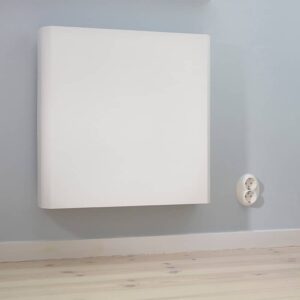We care about clean air
solutions for indoor air quality
Quick to: advice and product
Remove fine dust with four effective tips | Get rid of dust particles quickly
Fine dust is harmful to health. It causes a lot of trouble. This includes potential absenteeism due to illness, but also health complaints. Many people think that the air quality outside is worse than inside. That is a misconception. The EPA has conducted an investigation. This shows that the quality of the indoor air is two to five times worse than the quality of the outdoor air. This is mainly due to lots of chemicals in the air.
In this article you can read why fine dust removal is necessary at home, how you do this and how you can measure it.
What are the health risks of fine dust in your home?
Fine dust particles penetrate deep into the lungs of humans. People are particularly at risk in large cities. Every year, a maximum of 3000 Dutch people die from the effects of (ultra) fine dust. So it’s very important to protect yourself from the risks. Fine dust causes various serious complaints, such as:
- heart and vascular disease
- high blood pressure
- breathing problems
- various allergies
- increased risk of lung cancer
Fortunately, you can protect yourself by removing fine dust from your environment. Below you can read four effective tips that really work.
Tip 1: Remove fine dust by using an air purifier
This is perhaps the best and fastest way to remove ultra-fine dust. An air purifier ensures that the most harmful substances and particles are removed from the air in your environment. Extreme Air Products offers the EA15, a beautiful air purifier that also has the option to be mounted on the wall. The advantage of this air purifier is that it’s quiet and energy-friendly. So if you are looking for a quick solution for removing fine dust, then using an air purifier is a good option. Experiences of our previous clients also prove this to be true.

The EA15 is a good choice for removing fine dust from the air
Tip 2: Always leave the extractor hood on while cooking
Inspection by the TNO research institute shows that fine dust particles occur in big concentrations, especially when roasting meat and stir-frying vegetables. Research from the World Health Organization (WHO) even concludes that when one fries a hamburger, the amount of dust particles rises to 67 times the permitted standard. A good way to deal with ultrafine dust during cooking is to always switch on the extractor hood. It’s also recommended to leave the extractor on for 20 minutes after cooking. If you don’t have an extractor hood, you can open the window in the kitchen. However, this will remove relatively less harmful dust particles such as fine dust than using an extractor hood. So, if you don’t have an extractor hood yet, it is highly recommended to buy one.

Roasting or stir-frying meat is a major emitter of dust particles (Source: Unsplash)
Tip 3: Remove fine dust by replacing your wood-burning stove
Wood burning is also a prominent source of ultra-fine dust. A fire pit emits a lot of harmful dust particles. According to the website stookwijzer.nu, such a stove emits just as much fine dust as a truck journey of 3,000 kilometers. To avoid this enormous risk of pollution, consider purchasing a pellet stove. This can result in significant savings in emissions. According to the Energy Research Center of the Netherlands (ECM), the PM10 emissions per kilo of fuel are between 6 and 40 grams. That while pellet stoves emit 1 or 2 grams of PM10 per kilo.
Tip 4: Stop smoking indoors
Removing fine dust is also possible by quitting smoking indoors. It should come as no surprise that cigarette smoke does not improve air quality. Cigarette smoke contains all kinds of dangerous chemicals, including fine dust. These chemicals cause various health problems. Lung cancer is an example of this. If you or your roommate smokes, consider smoking outside. This way you keep the indoor air clean and you also get a breath of fresh air.
Bonus tip: measure whether the taken measures are working
In this case, I think we can all agree to this: “Measurement is the key to knowledge.” This still applies if you take all of the measures to remove fine dust we spoke of before. With a fine dust meter you know exactly how many fine dust particles are present in the air and whether the air quality in your home is healthy.
Would you like free advice or a non-binding offer?
With our tailor-made solutions, we can effectively remove all harmful substances such as fine dust. Take a look at our product page with air purifiers or read more about the air purifier in our extensive advice. Do you have any further questions or would you like some free personal advice? Call +31 20 6464028 or go directly to our range of air purifiers:


